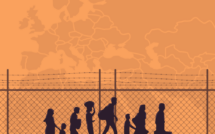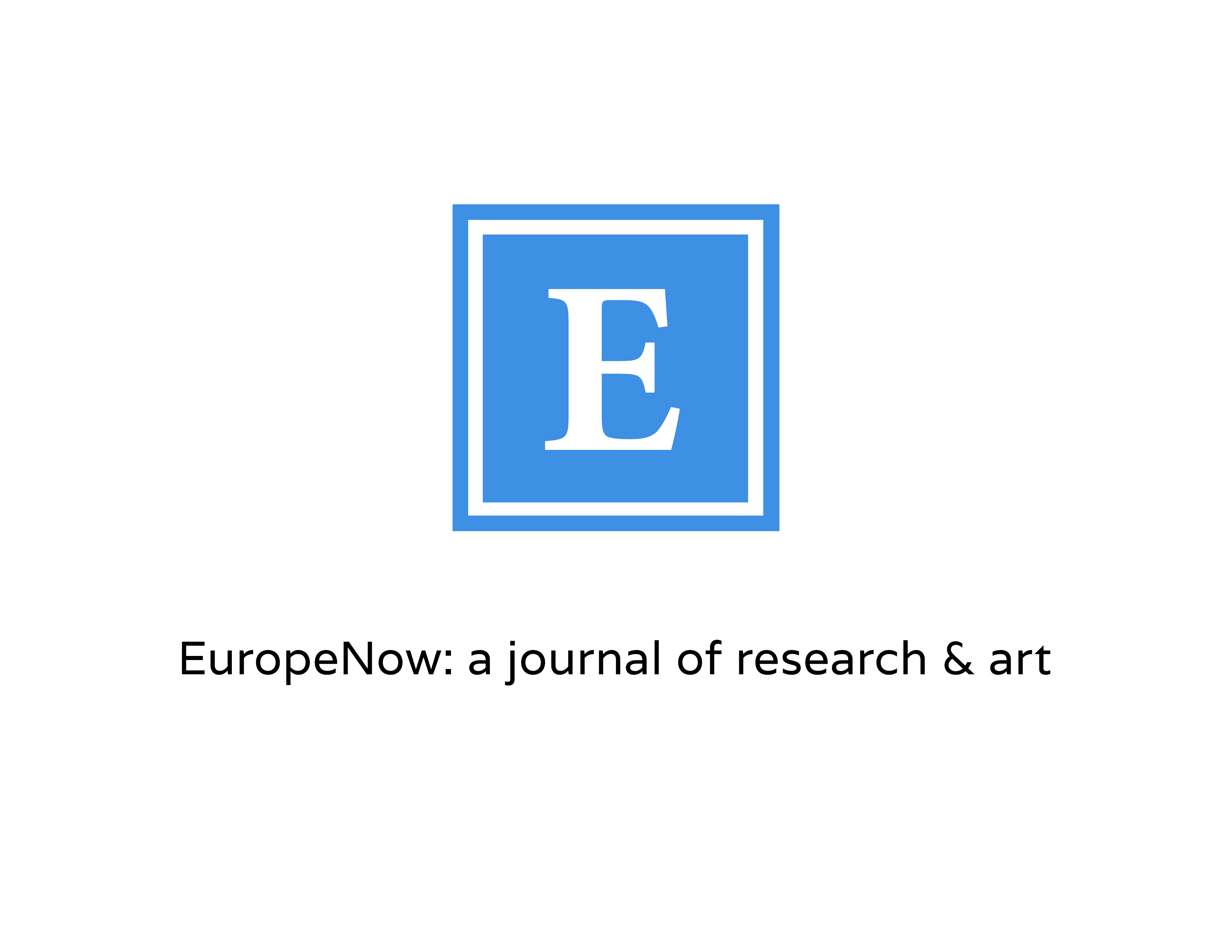
Social media regulation by the European Union: what protection can minority languages receive?

By Craig Willis – European Centre for Minority Issues
Regulating social media platforms has been a salient topic for many years and in the European context has already led to European Union-level and national level legislation attempting to enforce certain standards and safeguards. The past US presidential election has given this topic renewed and enhanced impetus, with the ownership of Twitter / X by Elon Musk, the continuing concern of TikTok’s Chinese ownership and most recently Mark Zuckerberg’s decision to remove fact-checking on Meta platforms in the US market. This has largely been framed in the context of safeguarding consumers/users, with vulnerable groups often cited as potential victims of a lack of regulation. For the EU, the Digital Services Act (DSA) was a significant legislative milestone, outlining specific rules for ‘very large online platforms’ (VLOPS) and launching the European Centre for Algorithmic Transparency (ECAT) to support the DSA’s enforcement (European Commission, n.d.a + b). These latest developments can also be seen in the context of the EU’s enhanced focus on strategic autonomy and control over outside influence.
Despite this progress, the context of linguistic diversity has been almost entirely absent from this debate – including in the EU where there are dozens of recognised regional and minority languages across its 27 member states. Accordingly, this commentary aims at unpacking the specific context of linguistic diversity and the importance of social media (and thus regulation of), both for individual consumers but also in the context of traditional media outlets and their struggle for visibility amongst majority-language dominance online.
The unique challenges faced by minority language media
Minority language media (MLM) outlets – such as public broadcasters in Basque, Catalan and Galician, or the many printed press outlets part of the MIDAS network (MIDAS press, n.d.) – have always faced existential challenges due to their marginalised (political or numerical) nature. The prime aim of these outlets, from the academic/activist perspective, is to contribute to language maintenance or revitalisation – it is this which differentiates it from majority language media contexts (Cormack, 2013). This is therefore the starting point from which to approach the influence of social media platforms but of course MLM do not operate in a vacuum and are heavily influenced by majority-language contexts, particularly in the state in which they exist. Yet, the approach of majority language actors cannot be entirely replicated as they are not concerned with language maintenance. Such aims have been expressed by multiple scholars (Riggins, 1992; Browne,1996; Cormack, 1999; Jones, 2007) since long before social media platforms arrived in the mid-2000s, however they hold true in this era of convergence too (Jones & Uribe-Jongbloed, 2013; Willis, 2024a).
The importance of social media platforms as a form of ‘online breathing space’ (Belmar and Glass, 2019) emerged as an important theme in literature during the 2010s. Most prominently Facebook and Twitter at this time, the usage was shown in spheres which did have traditional media, such as Welsh (Cunliffe et al., 2013) but also spheres without such institutionalised media such as Kashubian (Dołowy-Rybińska, 2014). Later in the decade, a focus on traditional media outlets such as broadcasters and newspapers in minority languages and how they could utilise social media platforms significantly increased (Costecalde, 2019; Díaz-Campo and Fernández-Gómez, 2020; Bober and Willis, 2023). Finally, the concept of a third sector of producers has also been added to the discussion – considering the use of social media by organisations such as NGOs, public bodies, private businesses and more (Jones, 2024). Thus, much like in majority language contexts, social media platforms have become a crucial actor for individuals, media companies and other organisations. Yet, the additional element of a minoritized language adds an additional layer of complexity.
Whilst social media platforms can offer a global reach for content creators (in any of the three sectors), they therefore also entail increased competition. In the context of content produced in minority languages, it is by its very nature, minoritized – i.e. will always struggle for visibility in a simple numbers game. Majority languages are a threat here but even more so are global hegemonic languages like English. Within this, there may also be an element of minority language users switching to the majority language because that is the dominant language on that platform or amongst the user’s network (Cunliffe, 2021). However, even when posting in a minority language, the challenge is to be seen – i.e. how does the content reach the user? This is an issue which relates to the specific algorithms of each social media platform and there is a serious concern broadly about the lack of transparency (and is one of the reasons why the EU set up the ECAT). Another issue is of course the languages themselves and whether the platforms (particularly the VLOPS) support them. Meta allows users to select from over 100 languages now and this includes many regional or minority languages – Basque, Breton, Catalan, Corsican, Frisian, Galician, Irish, Sardinian, Welsh – to name just a few (Facebook, n.d.). However, it is still missing many more, such as Cornish, Scottish Gaelic, Scots (all recognised under the ECRML by the United Kingdom, for example) or Latgalian, Kashubian, Romani, Sorbian – again, to name just a few. Moreover, concern has been expressed on whether this is manageable for Meta for aspects such as content moderation (Fick and Dave, 2019) and concern has been expressed at the subsequent hate speech which is not filtered out (Iyengar, 2021). TikTok has less languages available, with most of Europe’s regional and minority languages not supported, Catalan being an exception (TikTok, n.d.). Whilst there has been some progress in terms of providing the basic linguistic infrastructure for minority languages to exist on VLOPs, clearly more needs to be done in terms of allowing content in the languages to be successful. To give a concrete example of this, I have previously looked at the performance on TikTok of Catalan, Basque and Galician broadcasters and news outlets (Willis, 2024b), and found a very mixed picture in terms of success with engagement numbers.
The topic of advancement in AI / generative AI more broadly overlaps with the media context, with social media increasingly relying on AI for its functionality – through algorithms but also auto-translation, auto-transcription and even content moderation. This again brings unique challenges for minority languages, with regard to accuracy of translations and transcriptions. Relatedly, concerns over the reliability of the information provided by generative AI were recently amplified by the viral story of the Chicago Sun Times and its AI-generated reading list which turned out to include many invented (thus fake) book titles (Dunbar, 2025). That this occurred by a media outlet using AI, in English, is concerning on many levels and will likely cause concern that the results of generative-AI could be even less accurate in lesser-used languages.
How can the European Union and the Council of Europe help?
The limitations of the EU and its institutions in the area of linguistic diversity are often pointed out (Nagy and Vizi, 2022) and it is certainly true that the Council of Europe is the body which gives greater protection to regional and minority languages – in the situations where its instruments have been ratified. However, it is at the EU level where the more impactful legislation is enacted – particularly in the area of media and technology – and the directives and regulations it passes are applied directly to national law. For those regional and minority languages which have official status in their national contexts then, the EU law can be impactful. There is also the symbolic element which the EU can bring – here better cooperation with the Council of Europe could help.
The Digital Services Act (DSA) is the main regulation of relevance, given it primarily concerns online platforms including “social networks” and “content-sharing platforms” (European Commission, n.d.a). Its provisions are fairly widespread, but contain “transparency measures for online platforms that are wide-ranging, including on the algorithms used for recommendation”, and also state that “researchers will have access to data of key platforms, in order to scrutinise how platforms work” (European Commission, n.d.c). Relatedly, the ECAT contains in its remit “to provide technical assistance and practical guidance for the enforcement of the DSA” as well as to “research the long-running impact of algorithmic systems to inform policy-making and contribute to the public discussion”. The DSA has been followed by the EU’s AI Act in 2024, which does not mention media explicitly but does mention VLOPs – confirming that the obligations placed on providers of AI systems extends to VLOPs (European Commission, n.d. d). Specifically on media, the European Media Freedom Act is the most recent legislation the EU has passed, due to come into force in August 2025. This updates and enhances some of the provisions in the Audiovisual Media Services Directive and includes specific mentions of the role of VLOPs and claims to “guarantee transparency in state advertising for media service providers and online platforms” (European Commission, n.d.e). How minority languages and their media can benefit from these is still unclear and a task for both academia but also international bodies interested in the protection of such languages and their speakers.
On the Council of Europe’s side, the ECRML and the FCNM both contain articles related to media, albeit the ECRML in more depth. The ECRML in particular has been discussed from many angles related to media, assessing how the articles have been monitored by the Committee of Experts to ECRML (COMEX) (Dunbar and Moring, 2008) as well as the challenges monitoring faces in interpreting old provisions for new media (Jones et al., 2020). That substantial report (65 pages) is relatively recent (published in 2020) yet contains not a single mention of the term ‘algorithm’ and mentions ‘artificial intelligence’ just once, in the preface, – a stark indicator of how much has changed in the half a decade since. More recent analysis has suggested that the ECRML provisions can be adapted sufficiently (Lancos, 2024) – but at the same time, the limits of this have also been outlined (Nagy and Willis, 2025). Thus, it remains a challenge for both the COMEX and ACFC to monitor media usage and greater cooperation with the EU could assist this.
It is obvious that minority languages are not the priority for the likes of Meta, X or TikTok – even if some of the numerically larger languages like Catalan are supported by their apps. Thus, it is important for bodies like the EU and the CoE to bring these unique issues to the attention of the VLOPs. The COMEX in particular could seek to engage with the relevant EU Directorate-Generals and the ECAT to provide research that could inform the COMEX and ACFC of the possibilities the DSA offers. Moreover, the existing cooperation framework between the EU and Council of Europe (Council of Europe, n.d.) could be a channel to discuss this further – for example a joint programme could be established on this topic.
Conclusions
As has always been the case in the long struggle of regional and minority languages for adequate protection and promotion, the EU is never going to be proactive on this issue. It therefore falls to advocates and analysts working in the field of regional and minority languages to push the EU, for which there are new levers to do so. The DSA is a huge advancement in this area and whilst not perfect it does provide a basis for challenging the so-called VLOPs. Moreover, the ongoing process of Basque, Catalan, and Galician being proposed by Spain to become official EU languages (Liboreiro, 2025), could provide the political space and salience to discuss the role of the EU for languages in the 21st century – of which social media is a major area. Moreover, as said throughout, the Council of Europe remains one of the key players here and bodies such as the COMEX and the ACFC should enhance their dialogue with EU actors in order to be up to speed with the latest EU regulations and how this can be applied on a national context for the benefit of regional and minority languages. There is a core role here for academia also, to scrutinise and better understand how the DSA can be applied and to push actors like the ECAT to enhance their research on how algorithms affect different demographics. This was attempted in the context of the Audiovisual Media Services Directive, particularly for the regional languages in Spain (Barreiro González, 2023) but ultimately the limitations were shown when the Spanish court ruled that language quotas on streaming platforms only applied to those registered in Spain (Castro and Puente, 2021) – thus Netflix and other global platforms were exempt, underlining the need for an EU-wide solution to such issues.
Providing further academic scrutiny to the DSA will be one of the foci for the COST Action network, PLURILINGMEDIA (COST, n.d.), which runs until 2028 and is bringing together many of the actors in this complex puzzle. As Chair of this project, I hope we can make some meaningful progress on the regulation (and promotion) of regional and minority languages on social media platforms, for the benefit of individual users but also the media outlets which serve these linguistic communities. One concrete aim will be to provide clear policy recommendations to both the EU and the CoE on how existing regulations like the DSA and AI Act can be better utilised for regional and minority language media contexts.
References:
Barreiro González, M. S. 2023. Perante a nova lei do audiovisual: análise e perspectivas / The new audiovisual law: analysis and perspectives. Santiago de Compostela: Grupo de Estudos Audiovisuais, Universidade de Santiago de Compostela.
Bober, S. and Willis, C. 2023. “The digitalization of minority language newspapers: between long-term trend and pandemic-induced adaptation”, European Yearbook of Minority Issues, Vol. 20 (2021): 66-92. https://brill.com/edcollbook/title/62139.
Browne, D. 1996. Electronic Media and Indigenous Peoples: A Voice of Our Own? Iowa: Iowa State Press.
Castro, I. and Puente, A. 2021. “El Gobierno avisa de que no puede imponer cuotas de catalán a plataformas como Netflix”, El Diario, 30 November. https://www.eldiario.es/catalunya/gobiernoavisa-no-imponer-cuotas-catalan-plataformas-netflix_1_8539887.html
Council of Europe, n.d. The Council of Europe’s Relations with the European Union. https://www.coe.int/en/web/der/european-union
Cormack, M. 1999. “Minority languages and television programming policy”, International Journal of Cultural Policy, 5(2): 293-313.
Cormack, M. 2013. “Concluding remarks: towards and understanding of media impact on minority language use”. In. Jones & Uribe-Jongbloed (eds.) Social Media and Minority Languages. Convergence and the Creative Industries. Bristol, Buffalo, Toronto: Multilingual Matters, pp. 255-265.
COST. n.d. CA23105 – Language Plurality in Europe’s Changing Media Sphere (PLURILINGMEDIA). https://www.cost.eu/actions/CA23105/.
Costecalde, P. 2019. “Les télévisions celtiques TG4, S4C, BBC Alba, France 3 Bretagne, Brezhoweb: état des lieux et enjeux”, Études irlandaises, 44(2): 59-75. DOI: https://doi.org/10.4000/etudesirlandaises.8222
Cunliffe, D., Morris, D. and Prys, C. 2013. “Young bilinguals’ language behaviour in social networking sites: The use of Welsh on Facebook’”, Journal of Computer-Mediated Communication, 18(3): 339-361. DOI: https://doi.org/10.1111/jcc4.12010
Cunliffe, D. 2021. “Minority Languages in the Age of Networked Individualism: From Social Networks to Digital Breathing Spaces”. In: Lewis and McLeod (eds.) Language Revitalisation and Social Transformation. Springer, pp. 67-97. DOI: https://link.springer.com/chapter/10.1007/978-3-030-80189-2_3
Díaz-Campo, J. & Fernández-Gómez, E. 2020. “Las televisiones autonómicas públicas en Facebook. Análisis de la situación de TV3, Aragón TV, TVG y Canal Sur en 2015”, Estudios sobre el Mensaje Periodístico, 26(2): 507-518. DOI: 10.5209/esmp.67587
Dołowy-Rybińska, N. 2014. “Upper Sorbs and the use of minority language online: some advantages for the Upper Sorbian language and community”, Slavia-časopis pro slovanskou filologii, 83(2): 127-143.
Dunbar, R. and Moring, T. 2008. The European Charter for Regional or Minority Languages and the Media. Strasbourg: Council of Europe.
Dunbar, M. 2025. “Chicago Sun-Times confirms AI was used to create reading list of book that don’t exist”, The Guardian, 21 May. https://www.theguardian.com/us-news/2025/may/20/chicago-sun-times-ai-summer-reading-list.
European Commission. n.d.a. The Digital Services Act Package https://digital-strategy.ec.europa.eu/en/policies/digital-services-act-package.
European Commission. n.d.b. About ECAT https://algorithmic-transparency.ec.europa.eu/about_en.
European Commission. n.d.c. Europe fit for the Digital Age: new online rules for platforms. https://commission.europa.eu/strategy-and-policy/priorities-2019-2024/europe-fit-digital-age/digital-services-act/europe-fit-digital-age-new-online-rules-platforms_en.
European Commission. n.d.d. AI Act. https://digital-strategy.ec.europa.eu/en/policies/regulatory-framework-ai
European Commission. n.d.e. European Media Freedom Act. https://commission.europa.eu/strategy-and-policy/priorities-2019-2024/new-push-european-democracy/protecting-democracy/european-media-freedom-act_en
Facebook (n.d.) Settings. Language and Region. Account Language. https://www.facebook.com/settings/?tab=language_and_region
Fick, M. & Dave, P. 2019. “Facebook’s flood of languages leaves it struggling to monitor content”, Reuters, 23 April. https://www.reuters.com/article/world/facebooks-flood-of-languages-leaves-it-struggling-to-monitor-content-idUSKCN1RZ0DL/
Iyengar, R. 2021. “Facebook has language blind spots around the world that allow hate speech to flourish’, CNN Business, 26 October. https://edition.cnn.com/2021/10/26/tech/facebook-papers-language-hate-speech-international
Jones, E. H. G. 2007. “The territory of television: S4C and the representation of the ‘Whole of Wales’”. In Cormack & Hourigan (eds.) Minority Language Media. Concepts, Critiques and Case Studies. Clevedon, Buffalo, Toronto: Multilingual Matters, pp. 188-211.
Jones, E.H.G. 2024. Presentation to the Committee of Experts of the European Charter for Regional or Minority Languages 80th Plenary Session, 19th November 2024, Strasbourg.
Jones, E. H. G. and Uribe-Jongbloed, E. 2013. Social Media and Minority Languages: Convergence and the Creative Industries. Bristol: Multilingual Matters.
Jones, E. H. G., Lainio, J., Moring, T. and Resit, F. 2020. New Technologies, New Social Media and the European Charter for Regional or Minority Languages.
Láncos, P.L. 2024. “New media and the Language Charter: Protecting regional or minority languages in the digital age”, Journal of Digital Media and Policy. DOI: https://doi.org/10.1386/jdmp_00155_1.
Liboreiro, J. 2025. “Spain fails again to secure unanimity to make Catalan, Galician and Basque official EU languages”, Euro News, 27 May. https://www.euronews.com/my-europe/2025/05/27/spain-fails-again-to-secure-unanimity-to-make-catalan-galician-and-basque-official-eu-lang
MIDAS press. n.d. https://www.midas-press.org/
Nagy, N. and Vizi, B. 2022. “The European Parliament, the Council and the European Council”. In Malloy and Vizi (eds.) Research Handbook on Minority Politics in the European Union. Edward Elgar Publishing, pp. 128-143.
Nagy, N. and Willis, C. 2025. “Minority Languages on Social Media: Can the Council of Europe Keep Up with the Post-Pandemic World?”, Talking Rights, 27 February. https://talkingrights.org/2025/02/27/minority-languages-on-social-media-can-the-council-of-europe-keep-up-with-the-post-pandemic-world/.
Riggins, S. 1992. Ethnic Minority Media: An International Perspective. New York: Sage Publications.
TikTok. n.d. Privacy and settings. Language. https://www.tiktok.com/setting?lang=en-GB
Willis, C. 2024a. “Divergence and convergence: The implications of shifting media consumption habits on the field of minority language media studies”, Catalan Journal of Communication and Cultural Studies, 16(1): 117-127. DOI: https://doi.org/10.1386/cjcs_00100_1.
Willis, C. 2024b. “‘Minority language media and TikTok: exploring usage by broadcasters and news outlets in Basque, Catalan and Galician”, Media@LSE Working Paper Series, #75. https://www.lse.ac.uk/media-and-communications/assets/documents/research/working-paper-series/WP75.pdf.
Author Bio:
Dr. Craig Willis is a researcher at the European Centre for Minority Issues and has recently completed his PhD at the Europa-Universität Flensburg with a dissertation titled ‘Purpose and Challenges of Minority Language Media‘. His research focuses broadly on minority language communities within the context of media, as well as in activism and civil society. He has recently been elected as Action Chair of the EU-funded Language Plurality in Europe’s Changing Media Sphere (PLURILINGMEDIA) COST Action, which will run until 2028.
Published on July 11, 2025.




